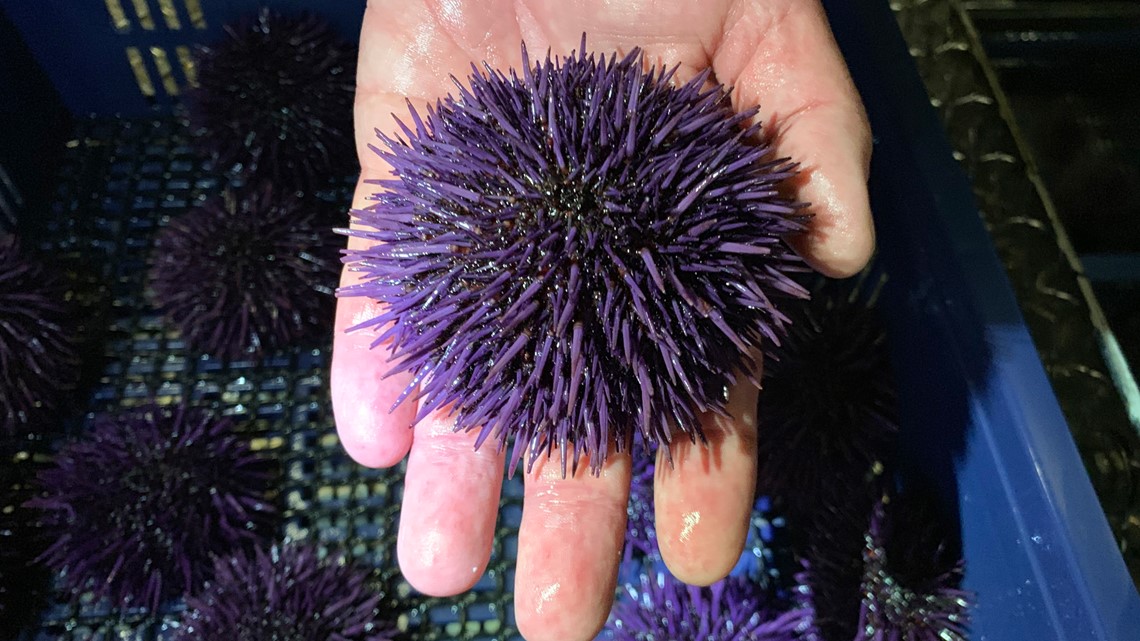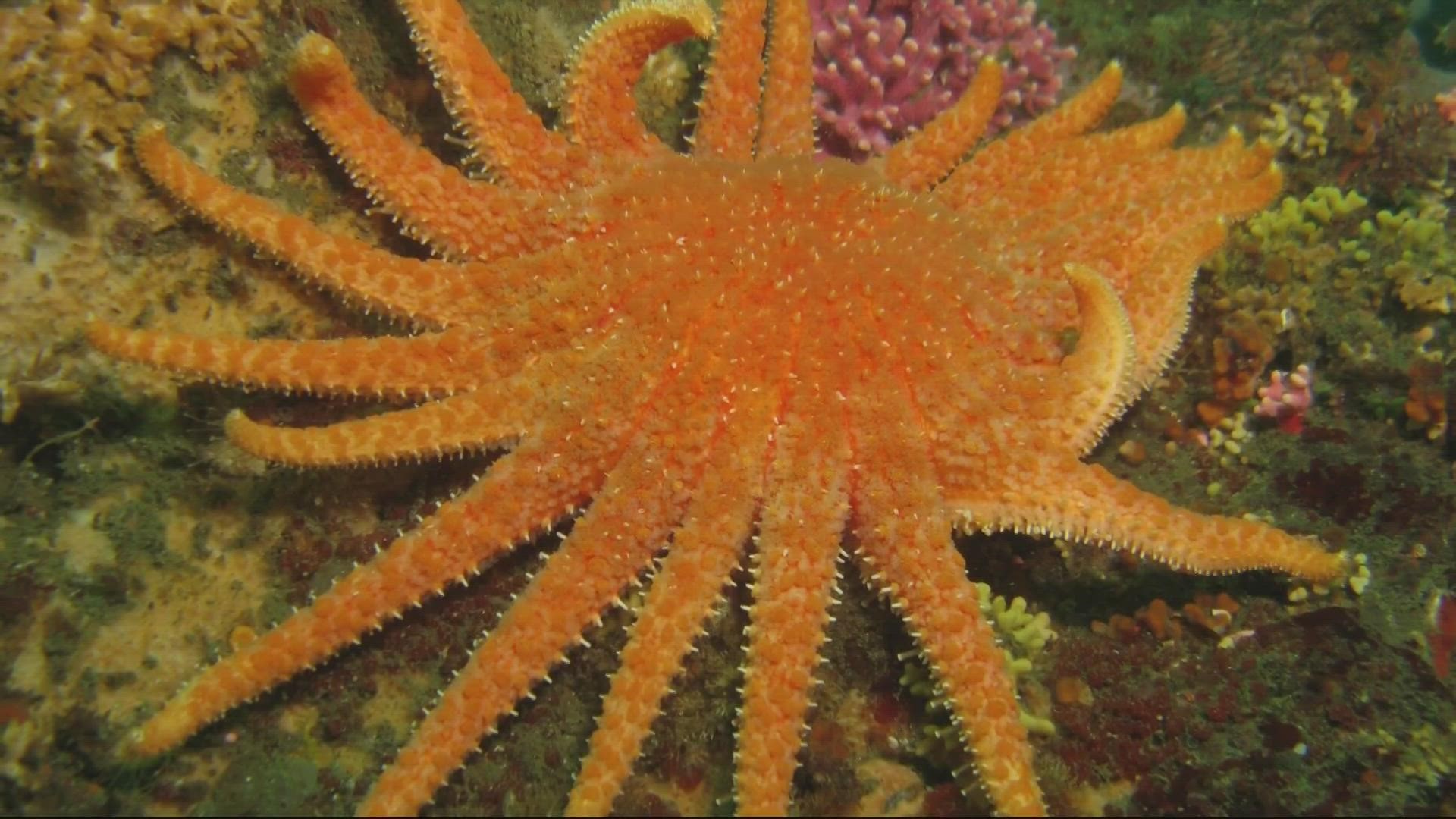PORTLAND, Ore. —
The ocean exists in a delicate equilibrium — remove one species and the entire ecosystem can quickly be thrown off balance.
That’s what happened in 2013 when a mysterious ailment, known as sea star wasting disease, nearly wiped out populations of sea stars along the West Coast, all the way from Alaska to Baja California.
While the cause of the disease is still yet to be determined, the cascading ripple effects are becoming clearer thanks in part to a new study from researchers at the University of Oregon and Oregon State University.
One species, the sunflower sea star, was hit particularly hard by the disease; and that’s important because the sunflower sea star is a prolific predator.
“It's big,” Sarah Gravem, an associate biology researcher at Oregon State, said of the sea stars, which can grow up to 3 feet wide. “It's the size of an extra-large pizza. It has 20 arms and it's a voracious predator, especially of sea urchins.”
Without sea stars to keep urchins in check, the echinoderms' populations exploded. Purple urchins feed on kelp and, in the aftermath of the sea star die-off, kelp forests have been decimated.
“They have just been mowing down the kelp forests, eating those kelp down to like (nothing) and forming what are called ‘urchin barrens,’” Gravem said.


Gravem said kelp acts as the “foundation” upon which many other marine species depend. Small fish use the towering kelp fronds for refuge from predators, and other species, like abalone, depend on kelp for food.
“It’s having cascading effects on literally hundreds of species,” Gravem said.
But before the recent study, researchers had been unable to determine whether the die-off and the urchin barrens were definitively linked.
To find that link, Gravem and University of Oregon biologist Aaron Galloway delicately collected two dozen sea stars from areas off the Washington coast where they survived the disease.
Over the course of several weeks, Gravem and Galloway observed the sea stars preying on urchins at the Friday Harbor Laboratory, using artificial intelligence to determine how frequently they fed and what their preferences were.
“What we were trying to do is really put numbers on it and put cause and effect onto all of these uncanny coincidences of wasting disease and kelp forest declines,” Gravem said.
Their findings: the sunflower sea stars in their experiment consumed .68 urchins per day. Galloway conceded that the number, less than one, may not sound impressive, but it represents a breakthrough in knowledge of the species and the effect they can have when they're present in an environment.
“We now know that they can eat .68 urchins a day,” he said. “There was no number like that before.”
Gravem and Galloway acknowledged that their results would need to be replicated in the wild, but even with their lab experiments, they said they’ve shown that restoring sunflower sea star populations could potentially reinstate the equilibrium that was lost when the species disappeared.
There are still major hurdles to that plan, however. The animals have not shown appreciable recovery in any of the areas where they were killed off by the wasting disease.
“Our only chance of really recovering at the scale that needs to happen for our kelp forests is through recovery of predators,” Galloway said
Restoring their numbers, which were thought to be around 5 billion before the die-off, will take help from humans; whether that means transporting sea stars from areas where they survived or using captive breeding programs to repopulate wild sea stars.
But it needs to happen quickly, Gravem said.
“I think at this point, if we don't intervene, it's going to be 50 years before we get these things back,” she said.

